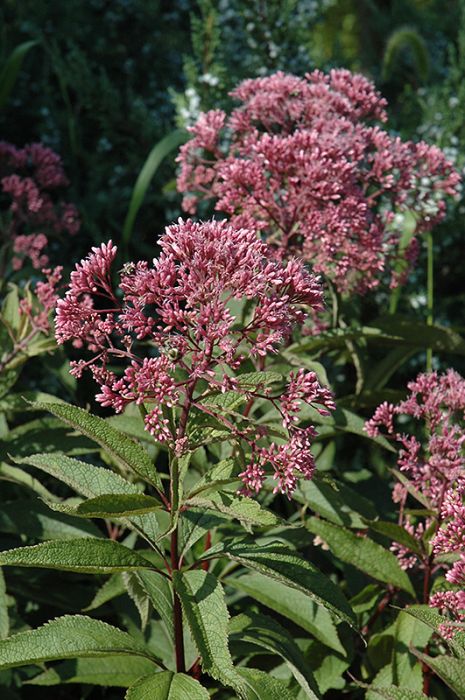Eupatorium, Joe Pye Weed 'Gateway'




Out of stock
Coming soon, still growing- Sun Preference
- Full-Sun, Part-Sun
- Bloom Time
- July, August, September
Description
Large specimen plant with maroon flowers on reddish stems. Excellent for attracting pollinators.
Minnesota's Largest Selection of Perennials
Discover an unparalleled selection of perennials at Gertens! With the largest variety in Minnesota, we offer endless options of colorful perennials, natives, and pollinator plants to beautify your garden year after year. From vibrant flowers to lush foliage, our perennials are perfect for adding beauty and charm to your outdoor space. Visit Gertens today and see why we're known as Minnesota's Destination Garden Center!
Details
Gateway Joe Pye Weed | Eupatorium maculatum 'Gateway'
Height: 6 feet
Spacing: 3 feet
Sunlight: full sun to partial shade
Hardiness Zone: 3a
Other Names: Eupatorium purpureum, Boneset
Brand: Gertens
Description:
Large specimen plant with maroon flowers on reddish stems. Great to give the back of the perennial bed some height
Ornamental Features
Gateway Joe Pye Weed has masses of beautiful plumes of lightly-scented purple flowers at the ends of the stems from late summer to late fall, which emerge from distinctive indigo flower buds, and which are most effective when planted in groupings. The flowers are excellent for cutting. Its large serrated narrow leaves emerge dark green in spring, turning forest green in color throughout the season. The dark red stems can be quite attractive.
Landscape Attributes
Gateway Joe Pye Weed is an herbaceous perennial with an upright spreading habit of growth. Its wonderfully bold, coarse texture can be very effective in a balanced garden composition.
This plant will require occasional maintenance and upkeep, and is best cleaned up in early spring before it resumes active growth for the season. It is a good choice for attracting butterflies to your yard, but is not particularly attractive to deer who tend to leave it alone in favor of tastier treats. It has no significant negative characteristics.
Gateway Joe Pye Weed is recommended for the following landscape applications;
- Vertical Accent
- Mass Planting
- Hedges/Screening
- General Garden Use
Planting & Growing
Gateway Joe Pye Weed will grow to be about 6 feet tall at maturity, with a spread of 4 feet. When grown in masses or used as a bedding plant, individual plants should be spaced approximately 3 feet apart. It tends to be leggy, with a typical clearance of 1 foot from the ground, and should be underplanted with lower-growing perennials. It grows at a medium rate, and under ideal conditions can be expected to live for approximately 15 years. As an herbaceous perennial, this plant will usually die back to the crown each winter, and will regrow from the base each spring. Be careful not to disturb the crown in late winter when it may not be readily seen!
This plant does best in full sun to partial shade. It is quite adaptable, prefering to grow in average to wet conditions, and will even tolerate some standing water. It is not particular as to soil type or pH. It is somewhat tolerant of urban pollution. This is a selection of a native North American species. It can be propagated by division; however, as a cultivated variety, be aware that it may be subject to certain restrictions or prohibitions on propagation.
More Information
| Common Family Name | Joe Pye Weed |
|---|---|
| Gerten Grown Plants | Gerten Grown Plants |
| Sun Preference | Full-Sun, Part-Sun |
| Bloom Time | July, August, September |
| Mature Spread (Range) | Over 36" |
| Mature Height (Range) | 37" - 48" |
| USDA Hardiness Zone | 3, 4, 5, 6, 7, 8, 9 |


